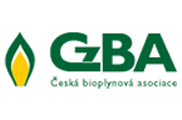PhysOrg: Caught in the act: Study discovers microbes speciating
Date: 14.5.2012
Not that long ago in a hot spring in Kamchatka, Russia, two groups of genetically indistinguishable microbes decided to part ways. They began evolving into different species - despite the fact that they still encountered one another in their acidic, boiling habitat and even exchanged some genes from time to time, researchers report. This is the first example of what the researchers call sympatric speciation in a microorganism.
The idea of sympatric speciation (one lineage diverging into two or more species with no physical or mechanical barriers keeping them apart) is controversial and tricky to prove, especially in microbes, said University of Illinois microbiology professor Rachel Whitaker, who led the study.
"One of the big questions, from Darwin on, is how do species diverge if they are living together?" she said. "That question really hasn't been answered very well, even in the macro-organisms that we've studied for hundreds of years."
Bacteria and their distantly related microbial cousins the archaea (are-KEY-uh) are even more difficult to study because they have so many ways to share genetic information, Whitaker said.
The microbes divide to conquer, producing exact or near-exact clones of themselves. If this were their only way of getting established, their genetic diversity would be quite low, the result of a few random copy errors and mutations, Whitaker said. But they also can link up with each other to pass genes back and forth, suck up random genetic elements from the environment and acquire new genes from the viruses that infect them and their neighbors.
Before scientists were able to dissect the genetic endowment of individual microbes, they had a hard time telling the bugs apart - so much so that they once confused bacteria and archaea. Researchers now know that the archaea belong to third domain of life - as different from bacteria as plants and animals are.
"Every time we look, everywhere we look we see variation in microbial populations using these molecular tools," Whitaker said. "You have to use these molecules, these DNA sequences, to tell the difference between species." But even with new sequencing technologies, the task of studying microbial evolution is daunting...
... the whole article you can read on






















